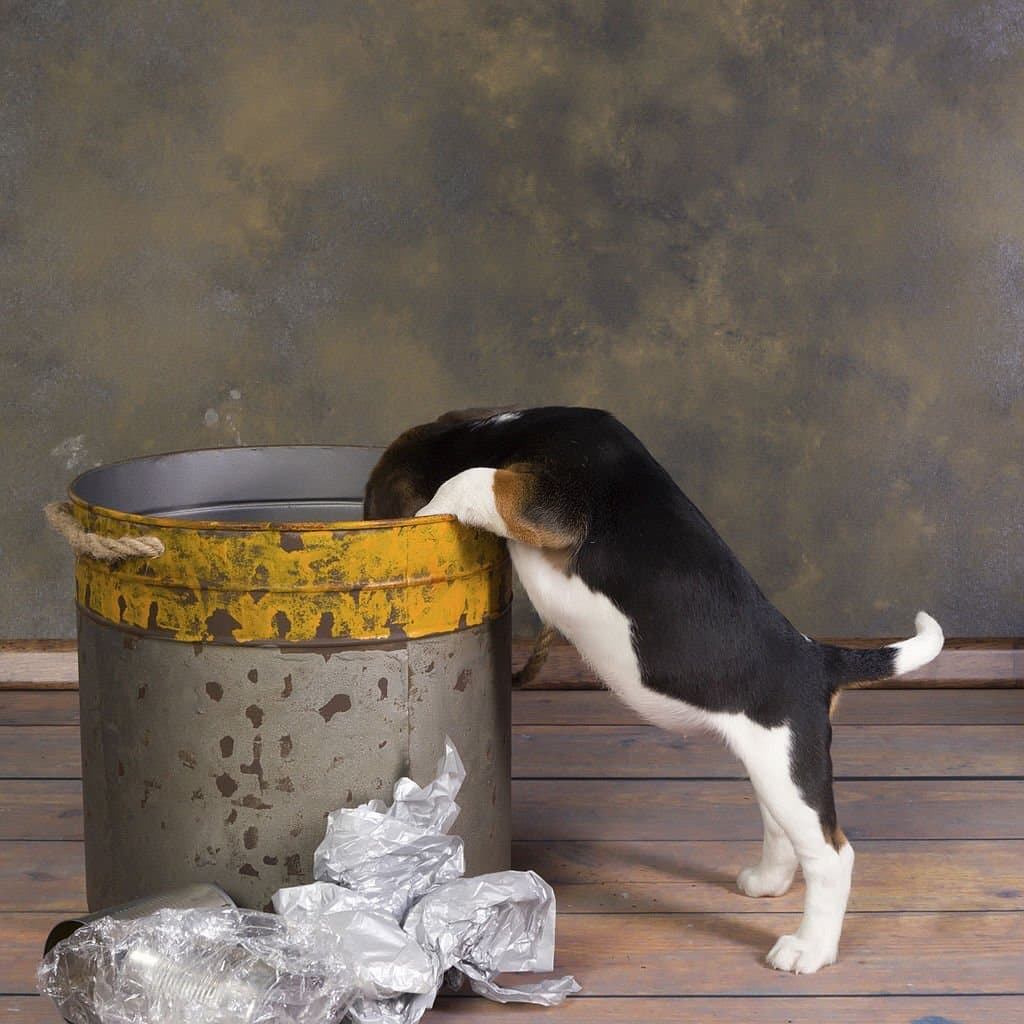Welcoming a new puppy into your family is an exciting time, but you need to ensure that your home is safe for your fluffy bundle.
No doubt, you’ll be heading to the pet store to choose everything you need for your pet, such as a collar, harness, leash, and a name tag. But what practical puppy-proofing steps do you need to take at home before you collect your new canine companion?
Read this guide for our top tips on how to prepare and puppy-proof your home and garden!
Table of Contents
1. Cover Your Trash Cans

Trash cans both inside and outside your home are a magnet for puppies! If left unsupervised, your puppy could easily overturn your trash can and get into mischief, eating something toxic, getting his head trapped in a plastic bag and suffocating, or choking on a bone or piece of tissue.
All those exciting, interesting smells are just too tempting for your pup’s hypersensitive nose, so you must keep your trash cans securely covered and fasten lids down firmly.
2. Remove Electrical Dangers
Teething puppies love to chew whatever they can grab, and that includes electrical cables, chargers, and power cords.
Always supervise your puppy when he’s not safely contained in his crate or exercise pen, and provide your pup with plenty of sturdy chew toys that will give your puppy a more suitable outlet for chewing behaviors.
3. Put Houseplants Out Of Reach
Houseplants look beautiful, adding a touch of color to your home. But many houseplants are toxic to dogs and cats and can cause serious health problems, including organ failure and even death in extreme cases if eaten by a curious puppy.
Be sure to put plants, such as American Yew, Sago palm, Castor Bean, and Autumn crocus well out of reach of your pet’s crate so that he can’t reach through the bars and nibble on your plants.
To see a full list of poisonous flowers and plants, check out the ASPCA Animal Poison Control’s website.
4. Put Your Bags Away!
Many commonly found products, such as chewing gum, now contain a chemical called Xylitol, a sugar substitute that’s highly poisonous to dogs.
Xylitol is present in all kinds of substances, including many you wouldn’t consider, such as hand creams. So, be on the safe side and put purses, backpacks, and their contents well out of your puppy’s reach.
5. Hide Drugs Away
By far, the most common cause of pet poisoning is human medications and supplements.
Keep your puppy safe by storing any drugs, creams, and vitamin supplements in a secure drawer or cabinet. It’s also a good idea to keep your pet’s deworming and flea treatments separate from your own medicines. Mix-ups do happen!
6. Provide Your Puppy With A Safe Space
Your puppy needs a safe, secure place where he can take refuge from the hustle and bustle of a busy household and just chill out when he wants to.
Dogs are naturally denning animals that appreciate a cozy crate or kennel to retreat to during the daytime and at night to sleep. You can also confine your puppy to his crate when you’re out at work or in another part of the house, and you have to leave your pup unsupervised.
Choose a high-quality crate with a puppy divider to make potty training easier and quicker.
7. Put Poisons Away
Most homes have several poisonous substances that need to be packed safely away and out of your puppy’s reach.
So, items such as cleaning products, glue, detergent, automotive chemicals, and gardening products should be locked away out of reach of your puppy. Vermin poisons and antifreeze are especially dangerous to pets and are responsible for many tragic accidental poisoning incidents every year. Keep your puppy safe by locking away toxic substances in a secure cupboard that’s in a part of your home that’s not accessible to your pets.
8. Set Boundaries
Puppies are very curious creatures that love to explore. If you give your pup the run of your home and backyard, the little guy could get into all kinds of trouble!
Set some boundaries for your puppy by using exercise pens or baby gates to restrict your pup’s range. Of course, you can also simply close a few doors to rooms that you don’t want your puppy to get into.
9. Height Safety
Puppies are generally pretty clumsy creatures, and they can easily sustain injuries through falling from chairs or tall pieces of furniture. Keep your puppy off your furniture and have kids sit down when holding the puppy in case your furry friend jumps or falls.
Steep stairs can also pose a safety hazard for puppies. Use a baby gate to keep your puppy from climbing the stairs until he’s stronger and better coordinated. If you live in an apartment, ensure that all windows are closed when your puppy is on the loose, and don’t allow your pup to venture out onto balconies unless the area is very securely fenced.
10. Keep Batteries Out Of Reach
Any items containing batteries must be kept well away from puppies. A puppy’s sharp teeth can easily chew through key fobs, electronic toys, and remote controls to expose the battery inside.
If the battery is swallowed, the acid contained inside can easily burn your puppy’s throat and could also cause him to choke.
Final Thoughts
Welcoming a new puppy into your life is undoubtedly a very exciting time for your whole family. But puppies are curious creatures that have a knack for getting themselves into mischief.
Before you get your new furry friend home, use our top tips and go through your house and garden to make sure that anything potentially hazardous to your pet is safely stowed away.
Good luck!


